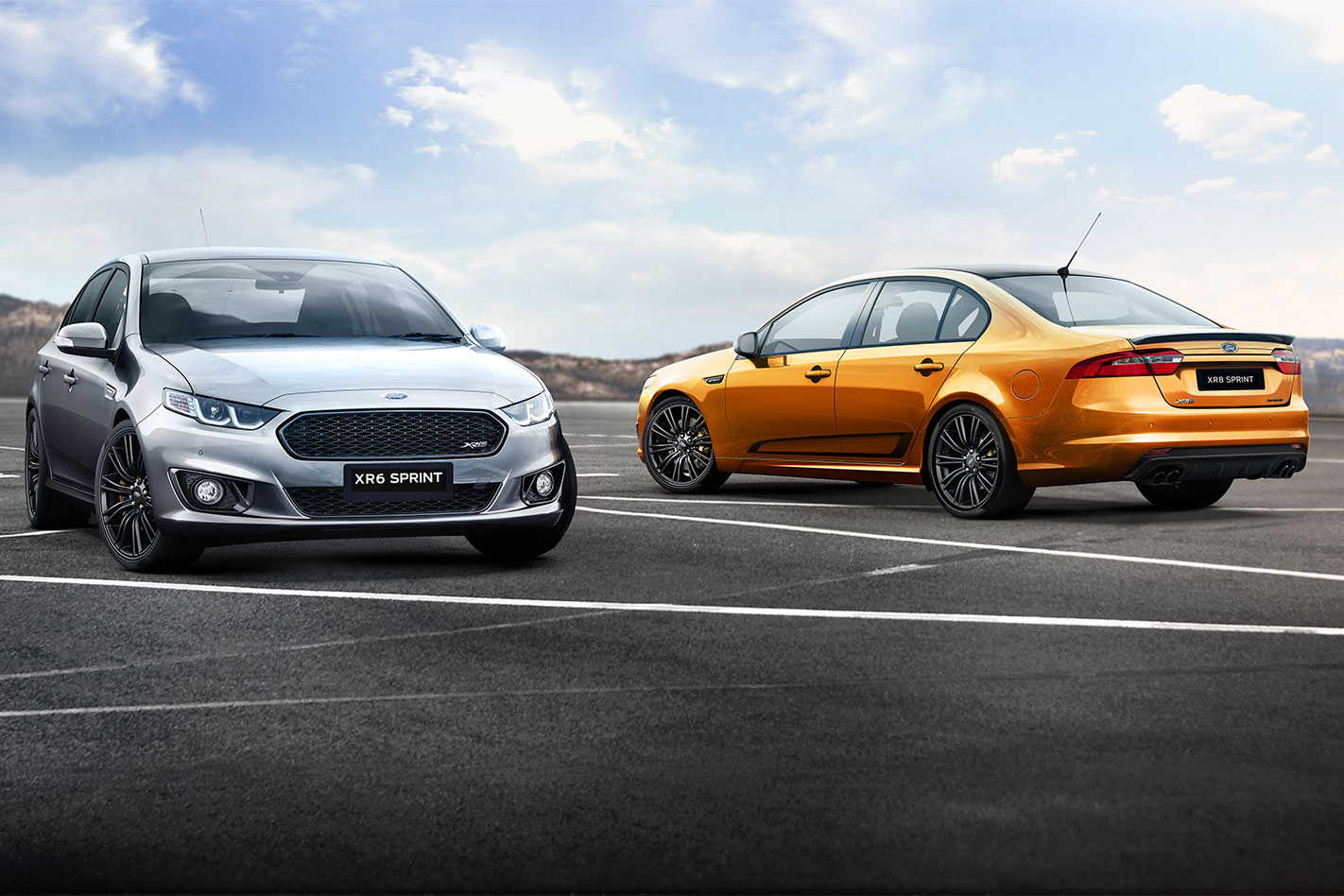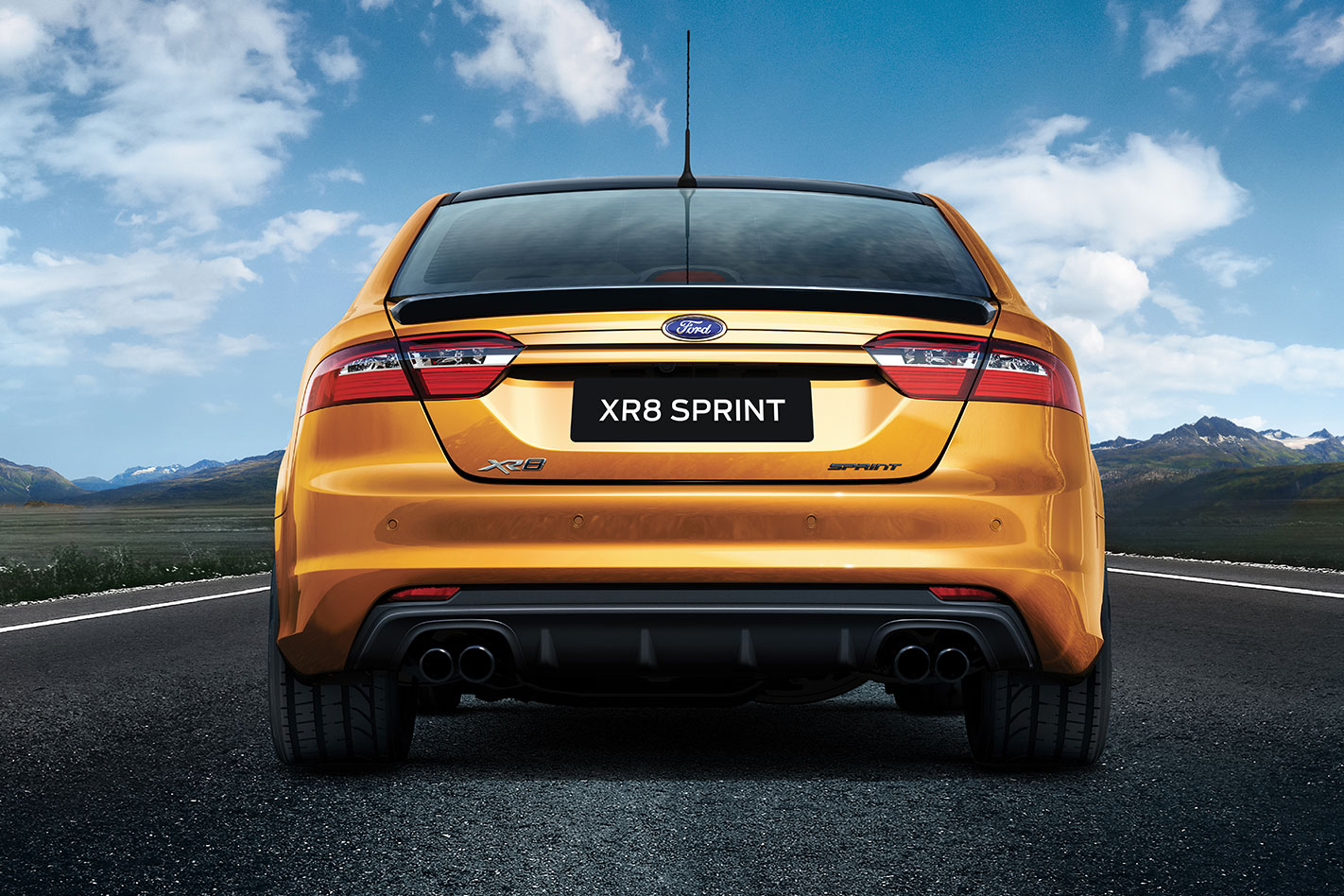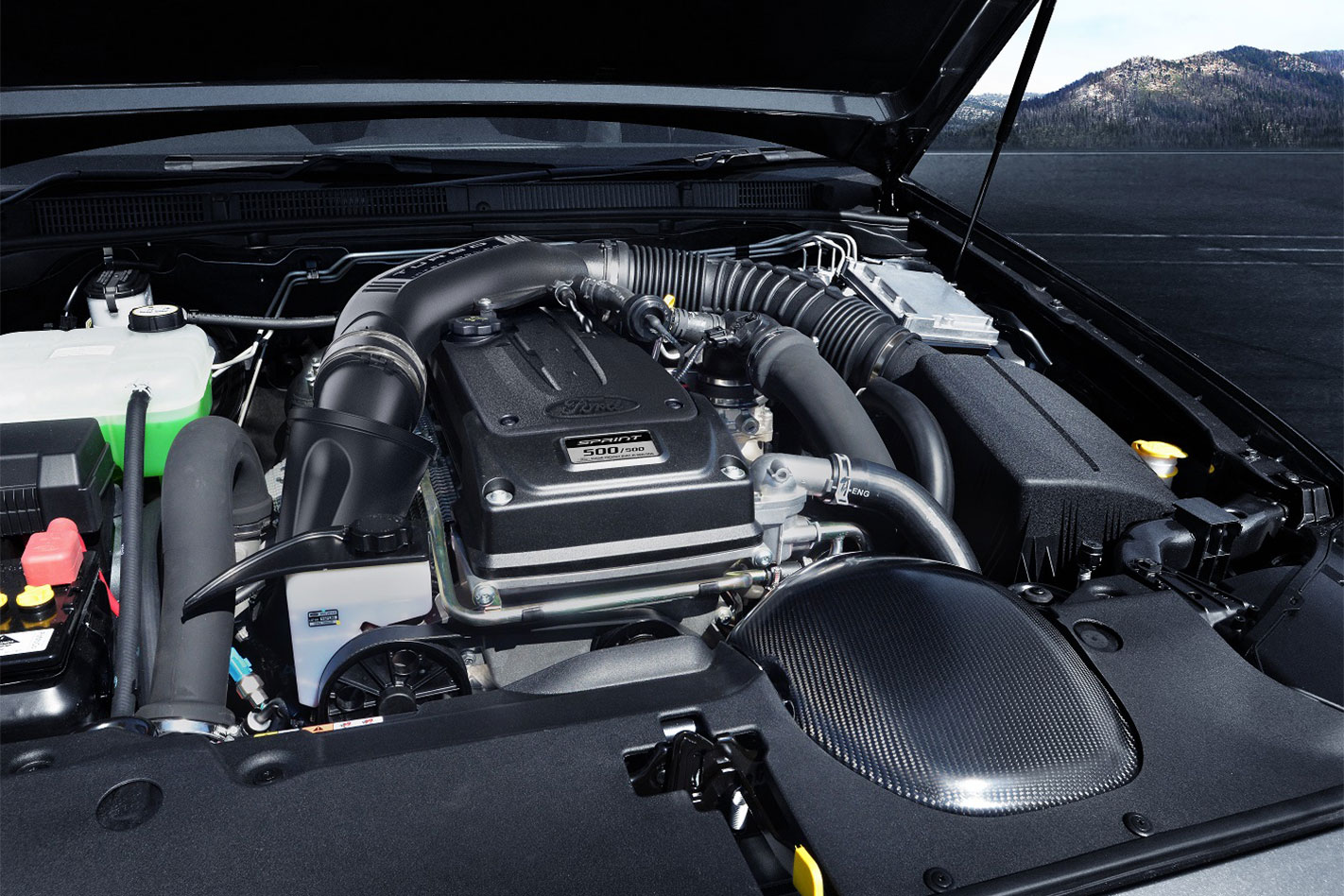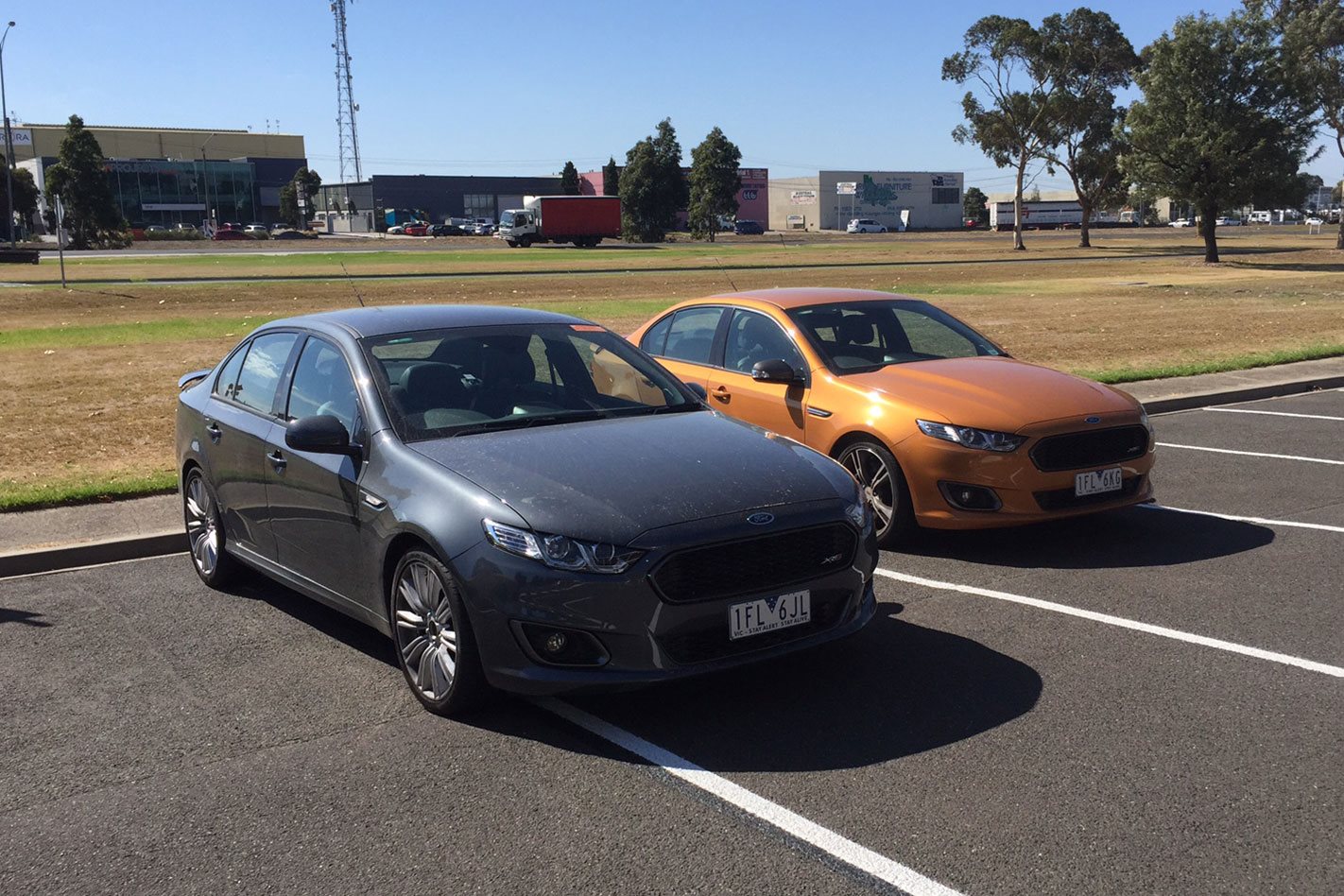If you want a comprehensive review on the new Sprint twins, we’re afraid you’ll have to wait until tomorrow, but we can offer you an early taste on what the last fast Falcons are like.
UPDATE: You can now find our launch review of the XR8 Sprint here.
When MOTOR met Ford engineers David Burn and Justin Capicchiano to chat all things Sprint (you can read it all in the next issue) they brought along a couple of hard-working prototypes for a chance to sample what they’ve been up to over the past 18 months.
To the casual observer they just look like a regular XR8 and XR6 Turbo (though the Turbo has recently been put on G6E-style rims which would’ve raised an eyebrow or two) as any giveaway parts such as the massive Brembo brakes and F6 intercooler have been painted black.

Likewise the extra power, but then again, power has never been a Miami shortcoming. There’s grunt a-plenty from more or less idle but the way it rips through the final 1500rpm to the 6250rpm cutout is nothing short of savage.
This test car is a manual, which still apparently accounts for 50 per cent of V8 sales, but we’d choose the auto as it just suits the car’s character a bit better.

It’s still firm, but it bobs along smoothly rather than fidgeting constantly like the standard car, and as such the Sprint restores one of the Falcon’s greatest strengths, its long-distance touring capabilities.
The XR6 Sprint displays similar characteristics and with a few corners in our way also has a chance to show off the new car’s handling chops. This prototype has fairly terrible rack rattle thanks to a hand-assembled intermediate shaft that won’t make production – and no other Falcon I’ve ever driven has had rack rattle, so I believe that – but the extra weight in the XR6’s steering is obvious, though it’s still lighter than the XR8.

Into second and then to third and the acceleration barely abates; individual torque maps for each gear are a clever way of maximising traction, but does lead to the initially strange – but addictive – sensation of linear acceleration. It’s safe to say, like the XR8, few will have any issues with how the XR6 Sprint goes in a straight line.
What’s particularly impressive is its extra responsiveness. Part-throttle overtaking is now made much easier thanks to much more power being available earlier in the rev range than the previous FPV F6.

That said, there’s the impression of greater grip underneath than we’ve felt from a Falcon before, which gives you the confidence to push rather than tiptoe around the edges of adhesion.
Obviously this is a fairly limited road test, but at least offers a glimpse into the talents of the new Sprints. We’ll have a full review of both cars from the launch in the next day or two and be sampling the car on road and track at the first available opportunity.






